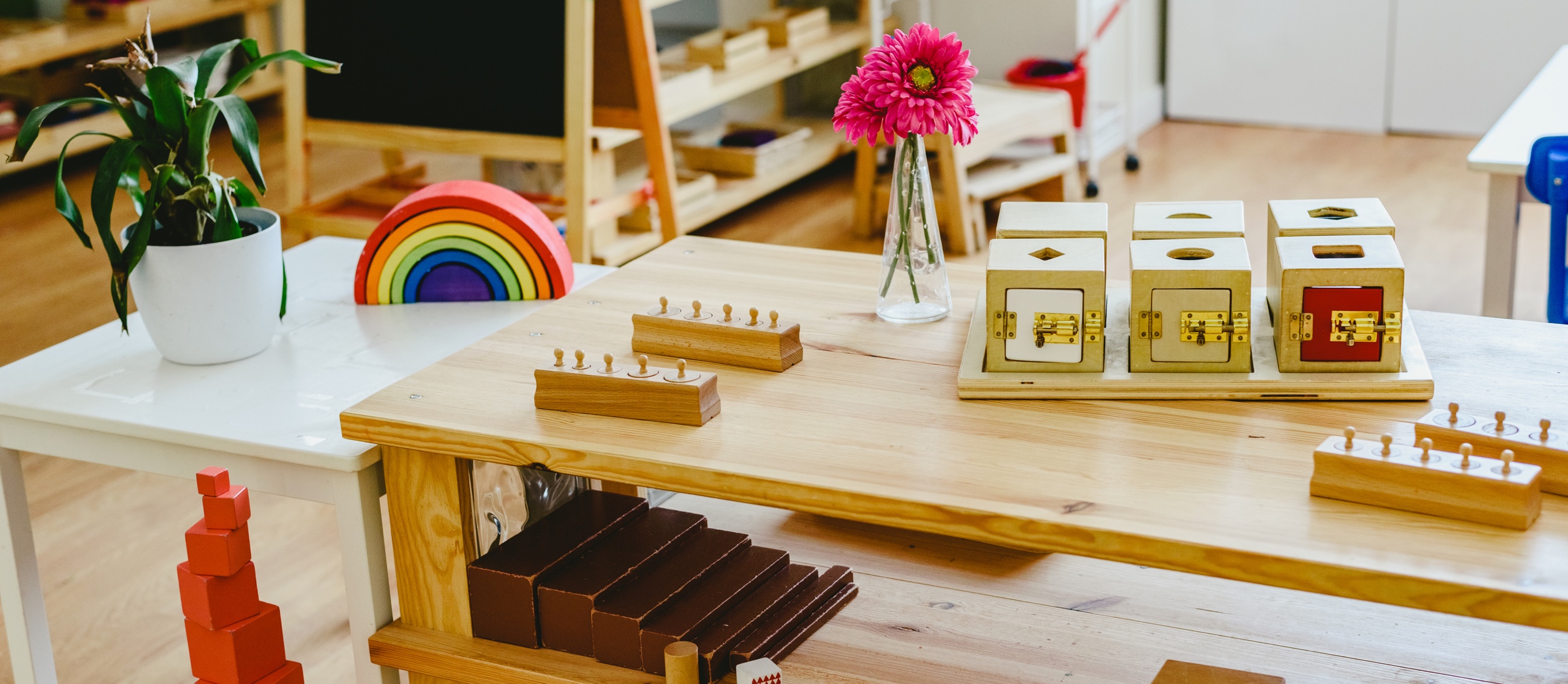The Montessori environment should be carefully designed so that it could encourage independence and concentration in the kids. Even a small change in the room will have a noticeable impact on the behavior of the child and may transform the way your child plays.
Simplify
Set a minimalist playroom for the kids. The Montessori spaces are more neutral-colored than the bright colors that are commonly used for kids’ rooms. The neutral color makes the space soothing and foster concentration. Also, the Montessori rooms will have far fewer things, both on the walls and to play with. This room has just a small shelving unit with two or three shelves and just a few items on each shelf, and with plenty of space between each toy.
So, when creating a Montessori playroom in at home, there is no need to get rid of a bunch of toys, instead, we will likely want to put many of them in storage. Putting out just a few toys at a time, and rotating them regularly, allows your child to focus on the available toys.
Give everything a place
Montessori includes “sensitive periods” and is a moment where a child becomes especially drawn to something and can learn about it. Children have a sensitive period for order from birth through age five, which peaks in early toddlerhood.
Young children like order in daily activities, and also in their physical environments, but they need some help to establish that.
Montessori environments support this desire for order in children through giving everything – be it a toy, a book, a craft, paints – anything a specific spot where it should go. Hence, you would not need huge toy bins to fill unrelated things in a Montessori play environment. Instead, each toy has its space in the room and belongs on a shelf. Toys including multiple pieces, like blocks or play animals, are often organized in small baskets or trays on the shelf for easy access.
This also helps children to put their things away comfortably than to toss everything together in a big bin. It is calming to always find a thing in the same spot instead of searching for it in the room or even throughout the house.
Include open space
Montessori environments should have plenty of workspaces, on the floor, and at tables. Having open space in the room gives plenty of space for free movement, which is important for young children.
Think low
If you look at furniture in Montessori classrooms, it is child-sized and the materials are kept on very low shelves so that the child will be able to access them himself. For a toddler or older include a child-sized table and chair. This helps the child have an option to play on the floor or at a table.
The same environment can be created at our house using lower child-sized furniture and lower shelves to store the kid’s toys and other play items, kids dress for easy access. And parents may also want to have a high-up wall shelf to keep any of their items, like a cell phone or cup of coffee the child will not be able to reach.
Include nature
Choose a room with natural light for kids. The kids should learn from the natural environment such as playing with their shadows, and watching the birds outside or getting mesmerized by the rain.

